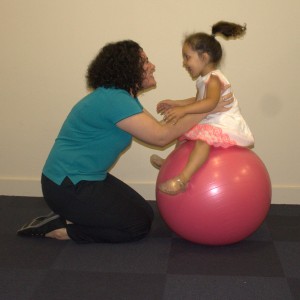 When children have sensory processing challenges and are over sensitive to sensory input they can be overstimulated, distracted or even distressed. If they are under sensitive their attempts to meet there sensory needs can interfere with their ability complete daily tasks.
When children have sensory processing challenges and are over sensitive to sensory input they can be overstimulated, distracted or even distressed. If they are under sensitive their attempts to meet there sensory needs can interfere with their ability complete daily tasks.
Here are some ways to help children regulate their senses and so be cam and alert for daily activities.
Increase proprioceptive input.
Proprioception is the most powerful form of sensory input. It can reduce over-responsivity in other systems, helping us to find the just right level of alertness and decrease anxiety. Children who need more proprioceptive input may have difficulty sitting still and enjoy rough play, or may appear extremely sluggish and need waking up.
Children who experience difficulties with proprioceptive may find the following strategies helpful:
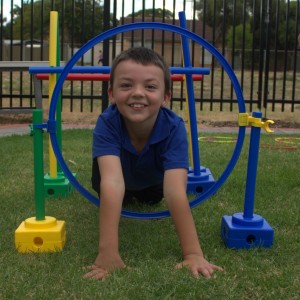 1. ‘Jump and wiggle’ breaks are a great way to help children re-focus as they appear to be becoming disruptive or dysregulated.
1. ‘Jump and wiggle’ breaks are a great way to help children re-focus as they appear to be becoming disruptive or dysregulated.
- Sensory related behaviours are very difficult for a child to control and for this reason breaks should be used to prevent behavior escalating or to calm a child that is having a meltdown. They should not be removed if a child is behaving poorly or used only as a reward for good behaviour.
- Some children may need movement breaks as often as every 45 minutes or as little as every 2-3 hours. Every child is different.
- A general rule of thumb is that 15-20 minutes of intense proprioception can create up to 2 hours of calm and organised behaviour. An occupational therapist can help design a ‘sensory diet’ that schedules proprioceptive activity breaks throughout the day.
- Some children may become over-excitable as a result of proprioception. It is important to trial activities to see how they influence the regulation of each child. An occupational therapist can give you information to teach the child to see when they are ‘too high’, ‘just right’ or ‘too low’ during activities.
2. Give children opportunities to regularly change positions while working e.g. Have them move between sitting at a table and on the floor.
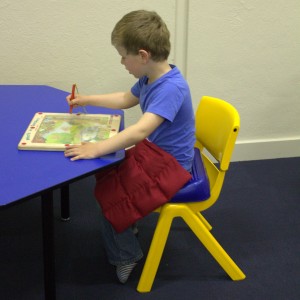 3. Weighted lap blankets, lap cushions or objects of approximately 10% of the child’s body weight can be relaxing for the child while they are expected to be quiet and attentive.
3. Weighted lap blankets, lap cushions or objects of approximately 10% of the child’s body weight can be relaxing for the child while they are expected to be quiet and attentive.
4. Regularly giving children a firm squeeze at their shoulder, elbow, wrist, knee and ankle joints can increase the child’s body awareness and reduce incidences of accidental pushing and hitting. Alternatively, teach the child to give themself a squeeze.
Activities that are lower to the ground tend to more calming than those that involve being upright e.g. log rolling versus running
Proprioception can be active (involving movement) or passive (given to the child through deep pressure). Children tend to respond better to one type or the other. Below are a number of activities that will increase the amount of proprioceptive input the children are receiving.
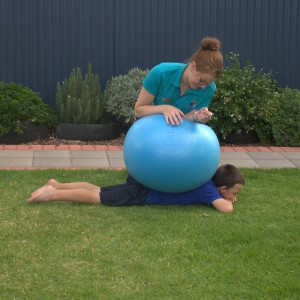 5. Having a gym ball rolled over their back and arms while lying on the floor to calm them down, slowly rolling up and back. This could be done with soothing music.
5. Having a gym ball rolled over their back and arms while lying on the floor to calm them down, slowly rolling up and back. This could be done with soothing music.
6. Rolling along the floor on a scooter board while lying on their stomach to work the child’s back, stomach and arm muscles. Encourage the child to use their two hands symmetrically or pull themselves along on a rope.
7. Spending time hanging from monkey bars and climbing on playground equipment to give their wrists and knees more proprioception.
8. Log rolling along the floor for whole body proprioception. This could be done as a game of musical chairs.
9. Having a game of chasey or a race on hopping balls.
10. Helping to lift and carry heavy things e.g. bringing in washing from the clothes line, returning a bag of books to the library, or carrying, pushing or pulling along a box of toys.
11. Moving between activities in different animal positions e.g. rabbit, frog, snake, bear, crab or duck.
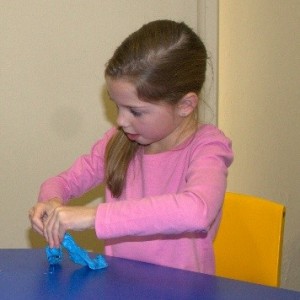 12. Play dough, theraputty, pegs, squeeze bottles and sponges provide proprioceptive input to the fingers and wrist joints.
12. Play dough, theraputty, pegs, squeeze bottles and sponges provide proprioceptive input to the fingers and wrist joints.
13. Have a game of tug-of-war with a rope or gym ball.
14. Create an obstacle course with opportunities for jumping, hopping, crawling, climbing and balancing.
Increasing vestibular input
The vestibular sense is our centre for balance. It detects our head position and body movements including up/down, back/forth, and side to side movements. It also provides information about whether we are moving fast, slowly or standing still, and whether objects are moving or still in relation to our body. If this sensory system is ‘under registering’ sensory input it can alter the way we perceive our body position and lead us to seek extra vestibular input to help us feel regulated (calm and comfortable).
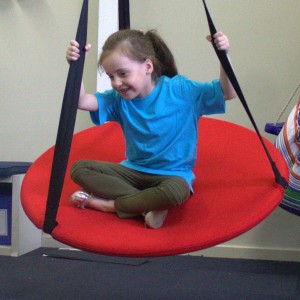 Children’s vestibular systems have direct effects on their alertness and activity level. You can use slow, rocking movements for calming, and faster, rotational movements for increasing their attention and engagement.
Children’s vestibular systems have direct effects on their alertness and activity level. You can use slow, rocking movements for calming, and faster, rotational movements for increasing their attention and engagement.
- Introduce new or extra movement opportunities slowly and never force a child to do movements they don’t feel comfortable or capable of.
- Avoid over stimulation. Signs your child may be becoming over stimulated include increased heart rate, dilated pupils, nausea, alarm reactions, over excitement, nightmares, seizures, child asking for the activity to stop, sweatiness, becoming pale/flushed. It is important that you stop activities before the child becomes nauseous and dizzy.
- If the child is epileptic, avoid spinning/circular movements and observe carefully their reaction to linear (forward/backward, side to side) stimulation.
15. Balance on a wobble board while throwing and catching a beanbag or ball.
16. Encourage your child to lie over a gym ball while they push and pulls against your hands. Rock your child on the gym ball while holding on to their legs whilst they lay prone (on tummy) and supine (on back).
17. Pretend to be a bird by running on tiptoes, slowing down, then landing on a perch
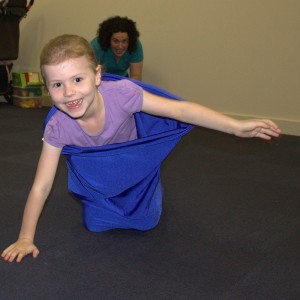 18. Roll your child up in a blanket while they are lying on the floor, then unroll them.
18. Roll your child up in a blanket while they are lying on the floor, then unroll them.
19. Do some trampoline exercises, such as jumping, kneeling, sitting, turning.
20. Encourage your child to do some skipping with hoops or ropes.
21. Get your child to jump over a “snake” (wiggling rope).
22. Encourage your child to do some bicycle riding or scooter riding.
23. Have your child swing him/herself by touching ground with hands, pushing off from a wall, pulling on a rope, or pretending to row a boat using a broom handle
24. Encourage your child to swing on a swing. Whilst swinging the child can play target games such as quoits, beanbag toss, or throwing and catching a ball.
25. Have your child play “Tarzan” by swinging from a rope on a safe tree.
 26. Get your child to sit with their feet in the middle of a tyre and bound around it.
26. Get your child to sit with their feet in the middle of a tyre and bound around it.
27. Have your child roll in a barrel while they play “Barrel Bowling” and try to knock down skittles.
28. Get your child to sit on a scooter-board whilst you spin them around while they are holding on to a hoop. You could also get your child to spin him/herself around on the scooter-board, or have a scooter-board race together!
30. Fidget boxes. A fidget box offers your child a choice of appropriate activities to meet their needs. As well as simple and inexpensive it can be a practical and effective way to help your child learn to manage their own behaviour. You may need to change items in the box as your child’s interests change, if things break or need to be washed (such as things that go in your child’s mouth). You may want to make a number of boxes for different situations such as home, school or going out. Different things will be appropriate in different boxes, for example at school you will need to avoid things that distract other children while at home this is not a problem.
Your occupational therapist can help you look at each of your child’s senses, work out if they are over or under active and suggest appropriate things to include in your box. Make sure the items are safe and age appropriate and don’t attract too much attention from others. You can pick up suitable items from cheap shops, craft shops and even grocery shops and well as include items from around the house.
 You can download ideas for a fidget box here. Once you have your fidget box ready, give it to your child at times when they have to sit for a long time or when they are likely to be distracted or fidgety. Try to give it to them before their behaviour is of concern, or when you see signs that they need some sensory input. Once you have developed your box you will need to work with your child’s teacher on ways to use it at school.
You can download ideas for a fidget box here. Once you have your fidget box ready, give it to your child at times when they have to sit for a long time or when they are likely to be distracted or fidgety. Try to give it to them before their behaviour is of concern, or when you see signs that they need some sensory input. Once you have developed your box you will need to work with your child’s teacher on ways to use it at school.
30. Sensory toolkit. A sensory toolkit is a way of offering your child regular, appropriate sensory activities to meet their specific needs, while allowing them a feeling of choice and control. During your child’s occupational therapy assessment your child’s therapist assessed your child’s sensory processing system and determined which kinds of activities were helpful for your child.
You can download a sensory toolkit here. The sensory toolkit is a simple way of offering your child a choice of beneficial activities when needed.
To assemble your sensory tool kit:
- Print one copy of the treasure chest or toolkit (whichever your child prefers) and laminate it.
- Stick three or four squares of “fluffy” Velcro on this page.
- Print two copies of the sheets of sensory tools which work for your child. (Your therapist will help you decide which pages contain the right activities for your child).
- Laminate both copies of each of the pages you need.
- Leave one sheet whole (to store the small cards) and cut the other sheet into individual cards.
- Put a “prickly” square of Velcro on the back of the small cards.
- Attach the small cards to the matching picture on the whole page using squares of “fluffy” Velcro.
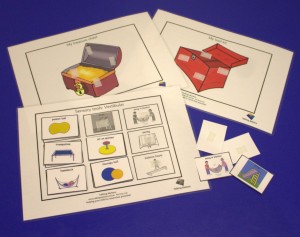 To use your sensory toolkit:
To use your sensory toolkit:
- Your therapist will work with you to help identify the times in the day that your child would benefit most from sensory input. For example, first thing in the morning, after Recess and Lunch or before bed, or at all of these times.
- Choose three or four activities that you are able to offer to your child at each time in the day that they need sensory input. You can change these each time if you wish, or leave them the same if they really work!
- Stick them on the toolkit or treasure chest picture
- When your child needs a sensory activity show the toolkit and allow them to choose an activity from the options provided
- Help them to access their chosen activity
- If your child finds it hard to move on or finish and activity your may wish to use a timer and/or first/then visual to help your child move to the next activity.
You might also talk to your child’s teacher about having a copy of their sensory toolkit at childcare, kindy or school, to help them access suitable sensory input in their learning environment. Your child’s therapist and teacher can help to decide which activities would be most appropriate in this setting.
Related Blog Posts
If you liked this post you may also like:
10 ways visuals help
Ready to Write with OT
Mr Snowman's Facial Expressions
A mum's 10 ASD therapy tips



